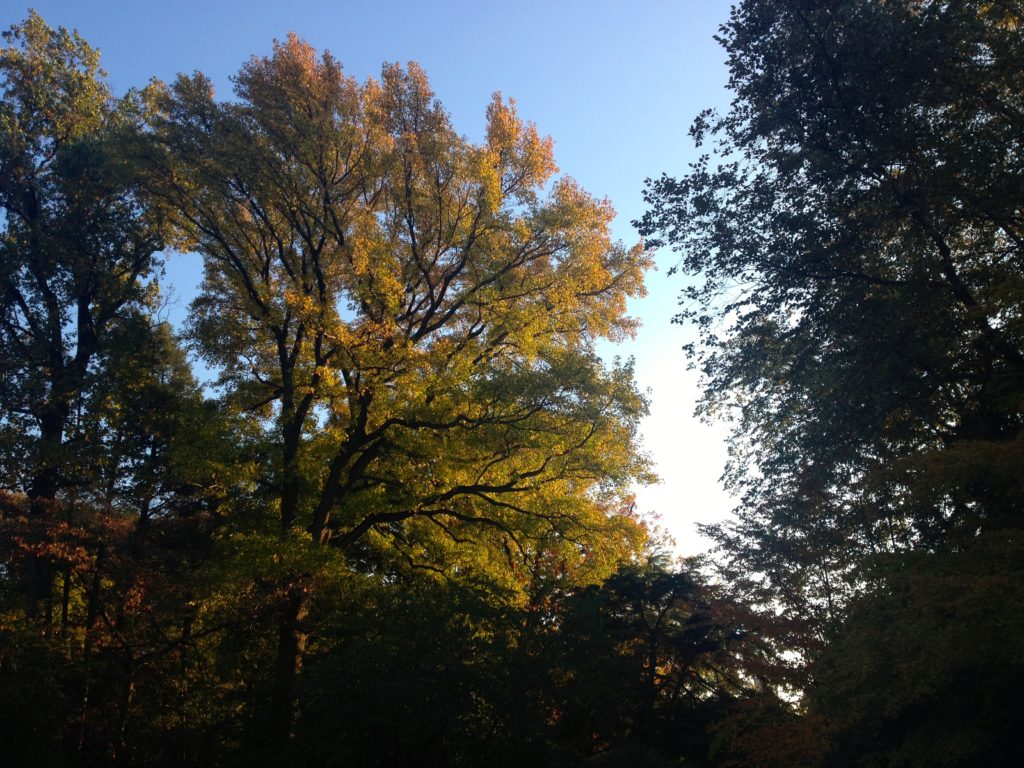“Life starts all over again when it gets crisp in the fall.” – F. Scott Fitzgerald, The Great Gatsby
Having come across these words in a recent piece in The Atlantic, “Why Back-to-School Season Feels Like the New Year – Even for Adults” (Sept. 17), I was reminded of the strange grasp that both nostalgia and hope often have on us this time of year; of our heart’s aching for past joys and memories, gently soothed by the hopeful anticipation of things to come.
Perhaps it’s because, as the article notes, roughly half of one’s lifespan is tied to an academic calendar – from being in school through young adolescence to becoming the parents of children – or because we long for one last chance to make “all things right” before the year’s end, but Fall does seem to signal the start of a new “life,” a new beginning, a new opportunity to usher in change alongside the changing color of leaves.
 Even Rosh Hashanah, the Jewish New Year, is celebrated in autumn, culminating 10 days from its start with Yom Kippur, the Day of Atonement – considered the holiest day of the Jewish calendar.
Even Rosh Hashanah, the Jewish New Year, is celebrated in autumn, culminating 10 days from its start with Yom Kippur, the Day of Atonement – considered the holiest day of the Jewish calendar.
“On Yom Kippur, the atmosphere reaches a peak of intensity in a day of fasting and prayer,” writes Jonathan Sacks in a recent essay for the Wall Street Journal. “Repeatedly we confess our sins, whole alphabetical litanies of them, including ones we probably had neither the time nor the imagination to commit.”
He continues: “And at the end of a long and wrenching day, we finish as we began 10 days earlier, with the sound of the ram’s horn—this time not with tears and fears but with cautious yet confident hope.”
 Indeed, hope and new life are born through the relinquishment of the old – of past seasons and ways of being, of past errors and mistakes, of the regrets, losses and despairs that mark the human experience.
Indeed, hope and new life are born through the relinquishment of the old – of past seasons and ways of being, of past errors and mistakes, of the regrets, losses and despairs that mark the human experience.
The prolific author and poet May Sarton (1912-1995) writes in Journal of a Solitude (1973),
“Does anything in nature despair except man? An animal with a food caught in a trap does not seem to despair. It is too busy trying to survive. It is all closed in, to a kind of still, intense waiting.”
She goes on to write,
“Is this a key? Keep busy with survival. Imitate the trees. Learn to lose in order to recover, and remember that nothing stays the same for long, even pain…[s]it it out. Let it all pass. Let it go.”
 Imitate the trees. Let it go. It is only in this relinquishment that we can fully embrace the promise of a new season, and the hope for change that it brings, knowing that the cyclical rhythm of nature will afford us many more new chances, new beginnings, should we need to, as we no doubt will, “start all over again.”
Imitate the trees. Let it go. It is only in this relinquishment that we can fully embrace the promise of a new season, and the hope for change that it brings, knowing that the cyclical rhythm of nature will afford us many more new chances, new beginnings, should we need to, as we no doubt will, “start all over again.”